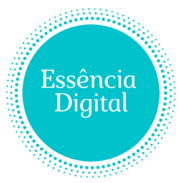Why Finding the Right Clients Matters More Than Finding Any Clients
In the competitive design freelance market, your clients shape your workday, your portfolio, your rates, and even your creativity. “Good clients” respect your expertise, pay fairly and on time, and help elevate your design business through repeat work and referrals. Conversely, chasing the wrong clients—those who undervalue design, haggle excessively, or drain your time—can quickly lead to burnout and stunted growth. The secret isn’t just hustling for volume. It’s creating a system to consistently attract and secure clients who are a perfect match for your unique skills and business goals.
Defining Your Ideal Design Client
Start by understanding who you want to work with:
- Industry/Niche: (e.g., tech startups, non-profits, e-commerce, restaurants, coaches)
- Project type: (web design, branding, UI/UX, packaging, illustration, motion graphics)
- Business values and style: Do you prefer bold innovation, clean minimalism, social impact, or luxury finishes?
- Budget and professionalism: Target clients who understand the value of good design and allocate realistic budgets.
List your “must-haves” and “dealbreakers.” These will help you filter opportunities—and communicate your preferences clearly.
Creating an Attractive, Targeted Portfolio
- Curate samples: Highlight work that mirrors the kind of projects and industries you want to keep attracting.
- Document your process: Include short case studies with each project—problem, solution, and measurable outcome (e.g., “improved conversion by 40%”).
- Show versatility within your specialty: E.g., website redesigns for SaaS, mobile apps for fintech, or logos for food brands.
- Professional presentation: Use Behance, Dribbble, your own website, or even a polished PDF deck. Brand your portfolio visually and with messaging for your dream clients.
A niche-focused portfolio is a magnet for ideal projects—you’ll attract what you showcase.
Becoming Visible Where Good Clients Look
- Freelance platforms: Upwork, Toptal, 99designs, and DesignCrowd are places to start, but seek direct leads for better terms and relationships.
- Niche job boards: Authentic Jobs, We Work Remotely, Working Not Working—these attract serious businesses and agencies.
- Industry and business forums: Participate in LinkedIn groups, Slack channels, and design communities in your specialty (e.g., Indie Hackers, Designer Hangout).
- Networking: Attend local or virtual conferences, design events, or webinars. Show up in places where your clients are already looking for creative solutions.
Mastering Client Outreach and Proposals
- Personalize every message: Avoid “mass” pitches—reference the client’s brand, recent projects, or why you’re a good fit for their aesthetic.
- Use a clear value proposition: Explain how great design impacts their specific goals (brand awareness, user engagement, sales).
- Suggest next steps: Invite them for a short call, offer a free mini-audit of their current design, or send links to relevant samples.
Top clients are bombarded with generic pitches—stand out by showing attention to detail and genuine interest in their success.
Leveraging Social Proof and Referrals
- Gather testimonials: Ask happy clients to write feedback after each project. Display these prominently on your website and portfolio.
- Showcase recognizable brands: Even small contributions to known companies or well-followed startups boost credibility.
- Encourage referrals: Politely ask satisfied clients if they know others who could benefit from your services.
Good clients trust word-of-mouth and visible proof more than anything you say about yourself.
Partnering with Agencies and Other Freelancers
- Form alliances: Agencies often need to subcontract to reliable designers; fellow freelancers may refer overflow work.
- Contribute to projects: Even small collaborations expand your network and reputation.
- Cross-promote services: Pair up with copywriters, marketers, or developers for package deals.
Partnerships create a network effect—more touchpoints, more chances for great leads.
Pre-Qualifying Clients Before Accepting Projects
- Have a discovery process: Use a questionnaire or initial call to gauge budget, project scope, business fit, and communication style.
- Be transparent about your process, pricing, and deliverables: Good clients respect clarity and expectations.
- Recognize red flags: Reluctance to pay deposits, vague briefs, dismissiveness of your expertise, or rushed deadlines.
- Learn to politely decline: Turning down mismatched clients is an investment in your long-term business health.
The best relationships start with mutual respect and clear boundaries.
Building Authority and Attracting Inbound Leads
- Share your knowledge: Write case studies, tutorials, or post design insights on LinkedIn, Medium, or your blog.
- Host webinars or workshops: Teaching positions you as an expert and draws in ideal clients hungry for high-level solutions.
- Engage in design trends: Regularly publish or comment on new tools, styles, or UX strategies to attract modern, innovative clients.
The more you serve your audience, the more they see you as “the” designer for their needs.
Maintaining Relationships and Earning Repeat Business
- Deliver exceptional work: Meet deadlines, communicate clearly, and deliver on promises.
- Follow up: After projects, check in with clients to see if they need updates, additional designs, or referrals.
- Ask for honest feedback: Use constructive criticism to refine your processes and offerings.
Loyal clients are the backbone of a sustainable freelance design business.
Conclusion: Create a Client Pipeline, Not Just a Client List
Finding good clients is an ongoing journey, not a one-time search. By clarifying your target, showcasing your strengths, being visible in the right places, and building real relationships, you’ll create a self-sustaining ecosystem of quality opportunities—where both you and your clients grow together.
Remember: Every project is a chance to prove your value and raise your profile. The best clients appreciate, trust, and invest in you—and with the right strategy, you can ensure they keep coming.

